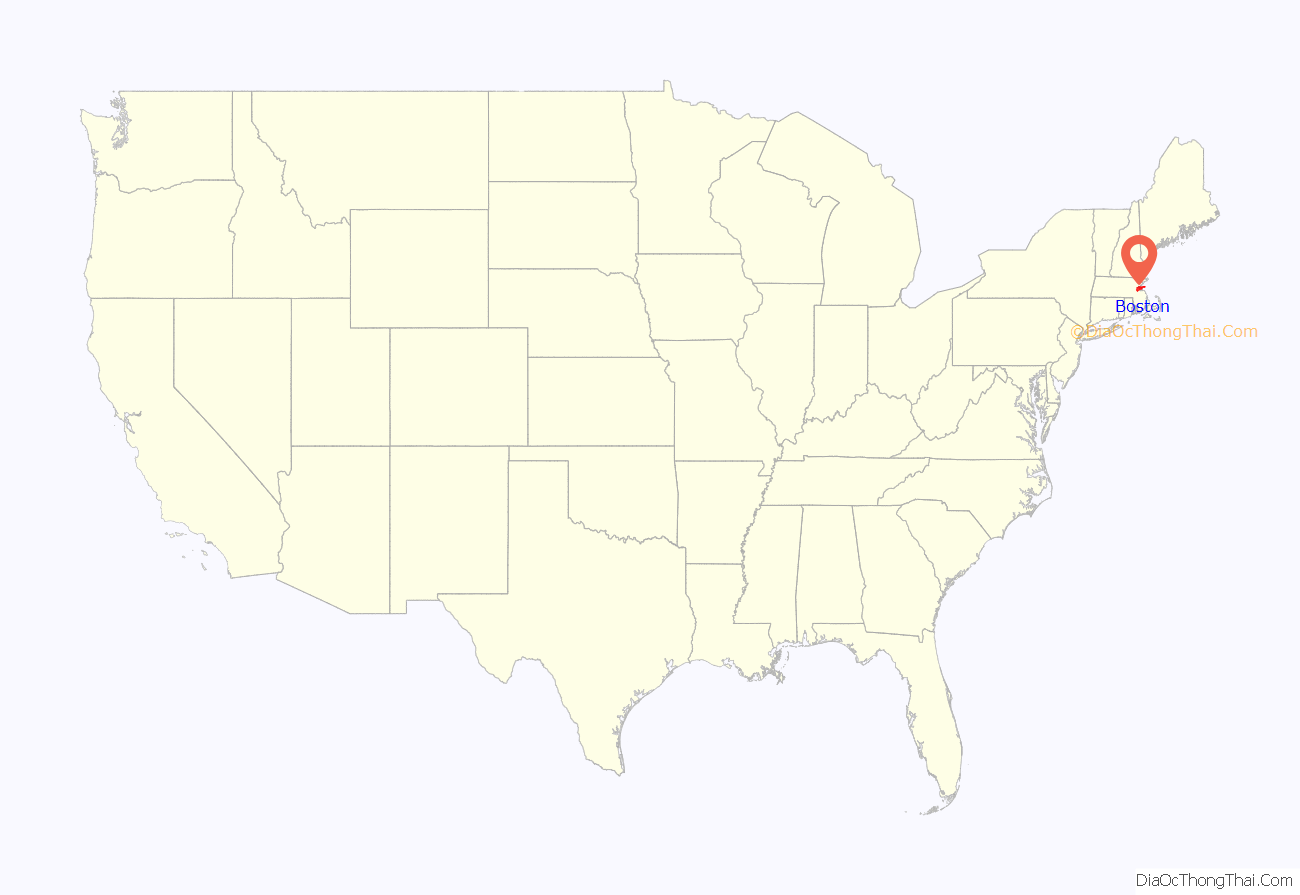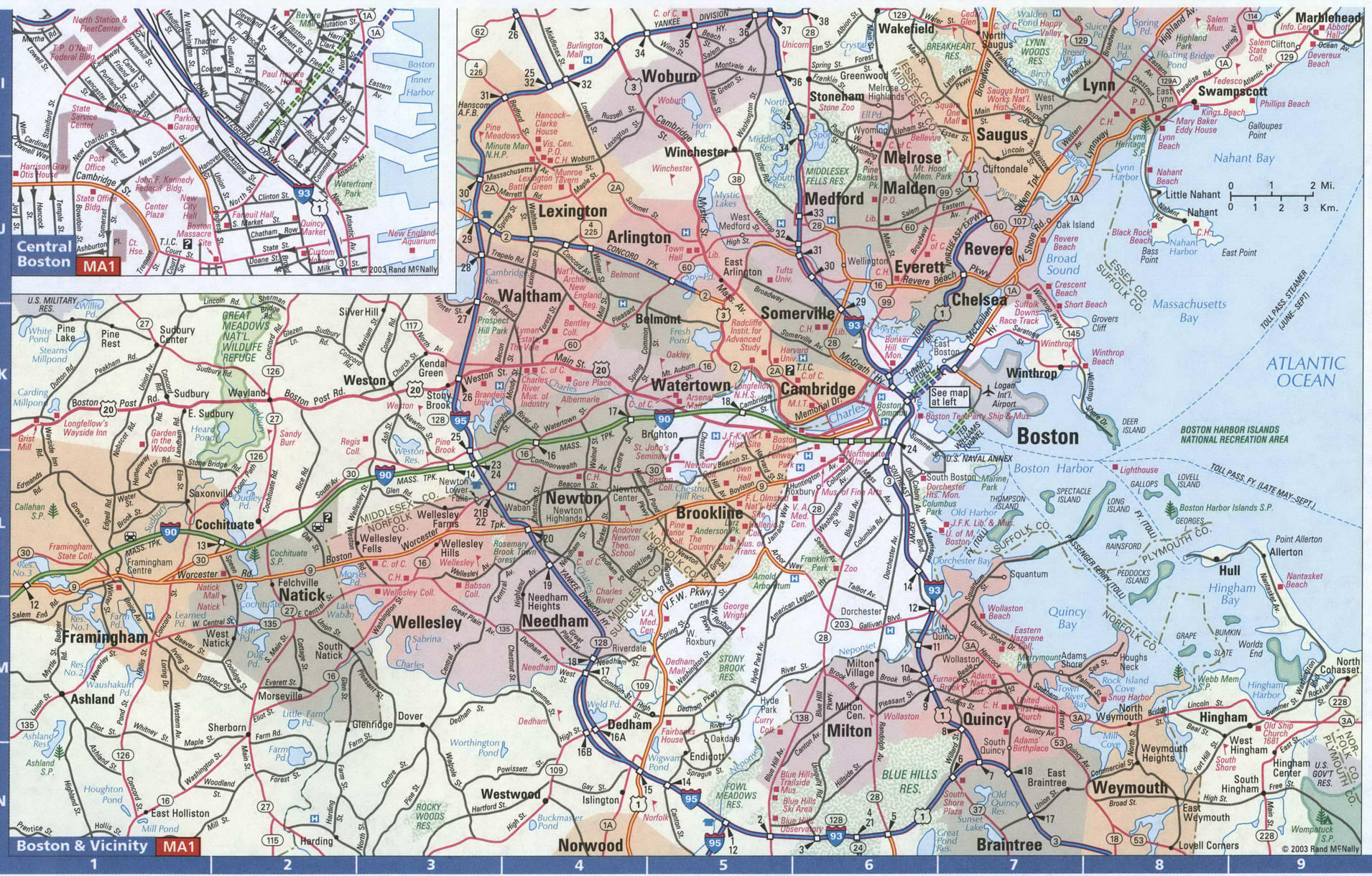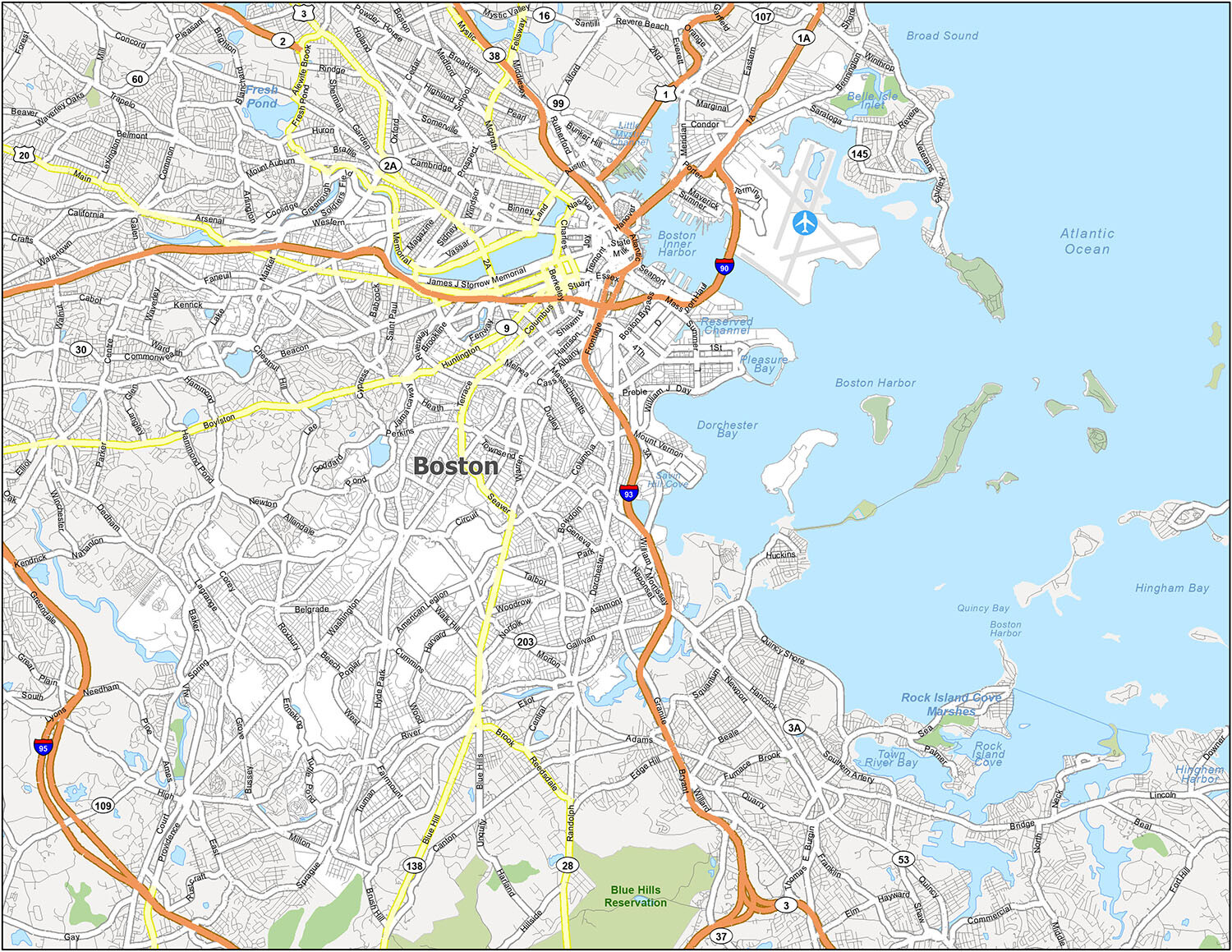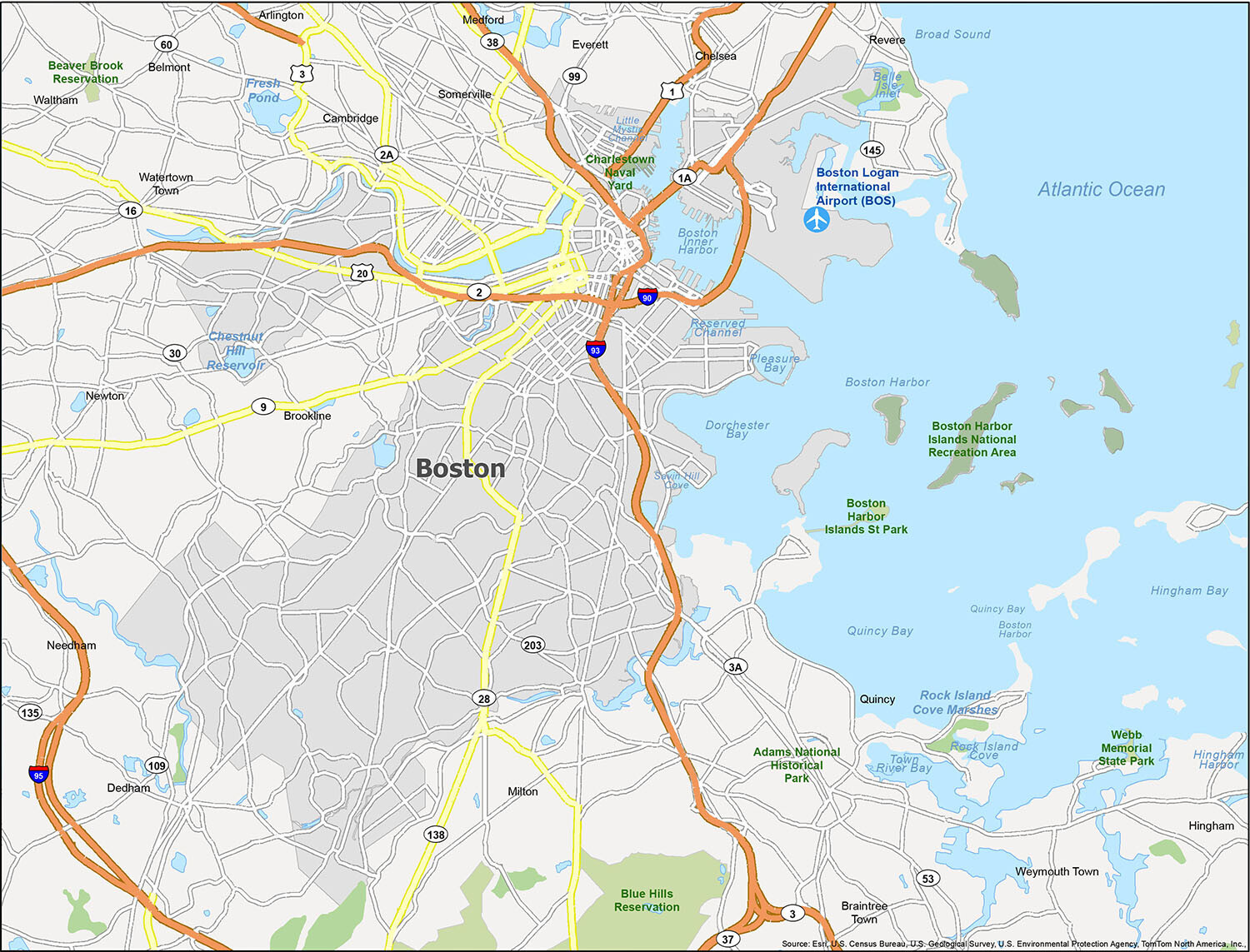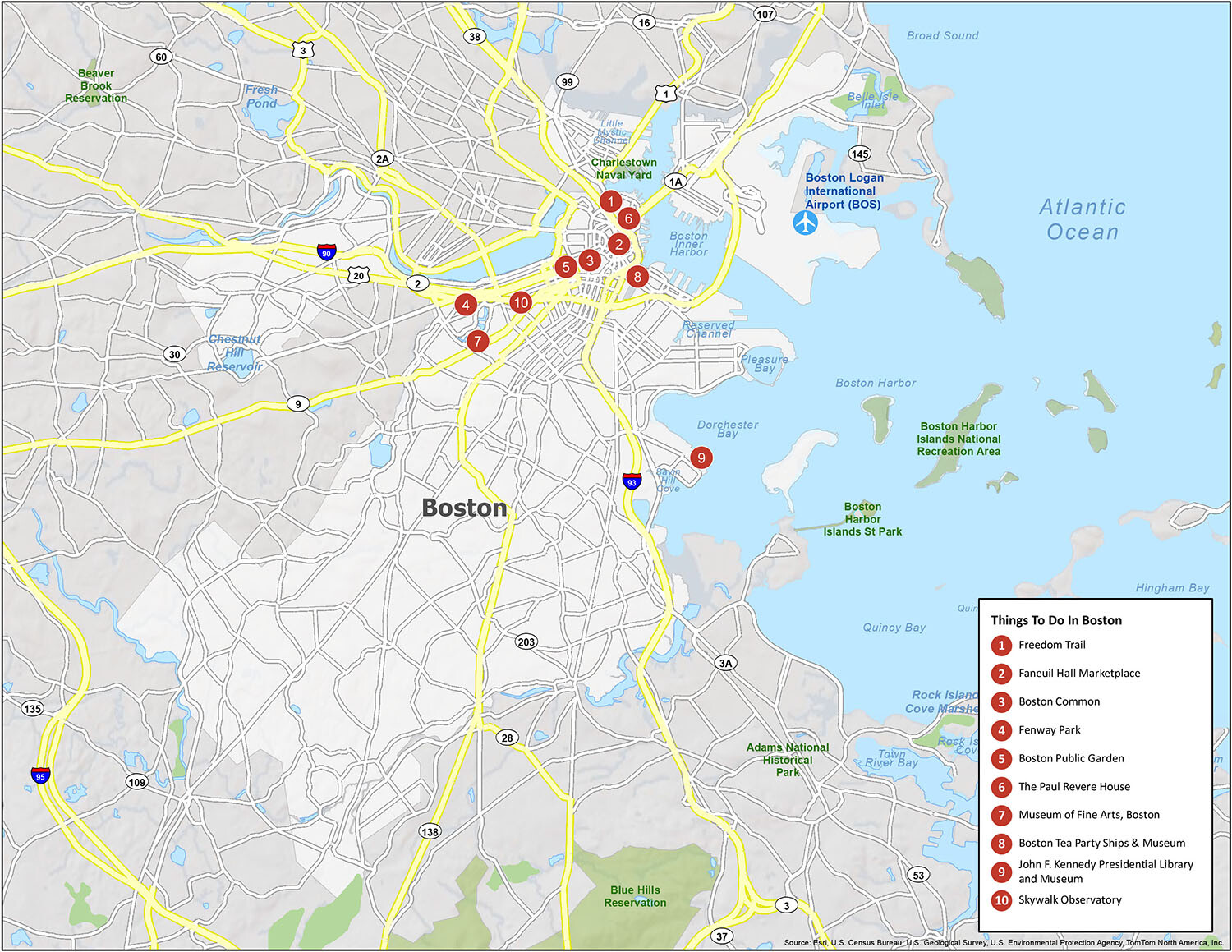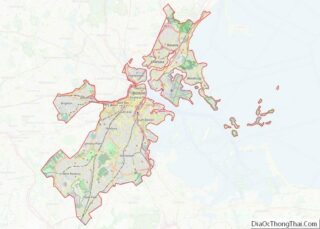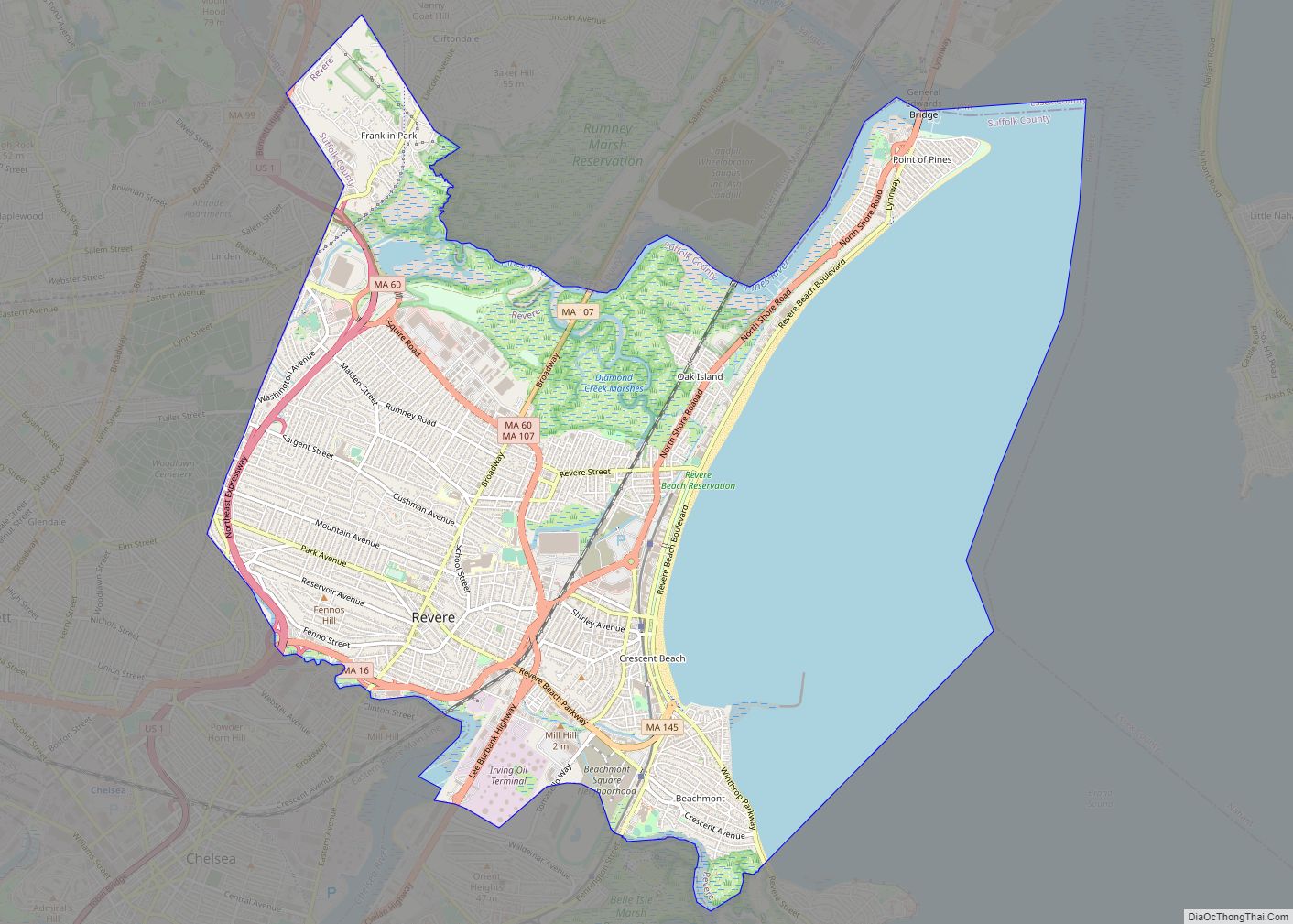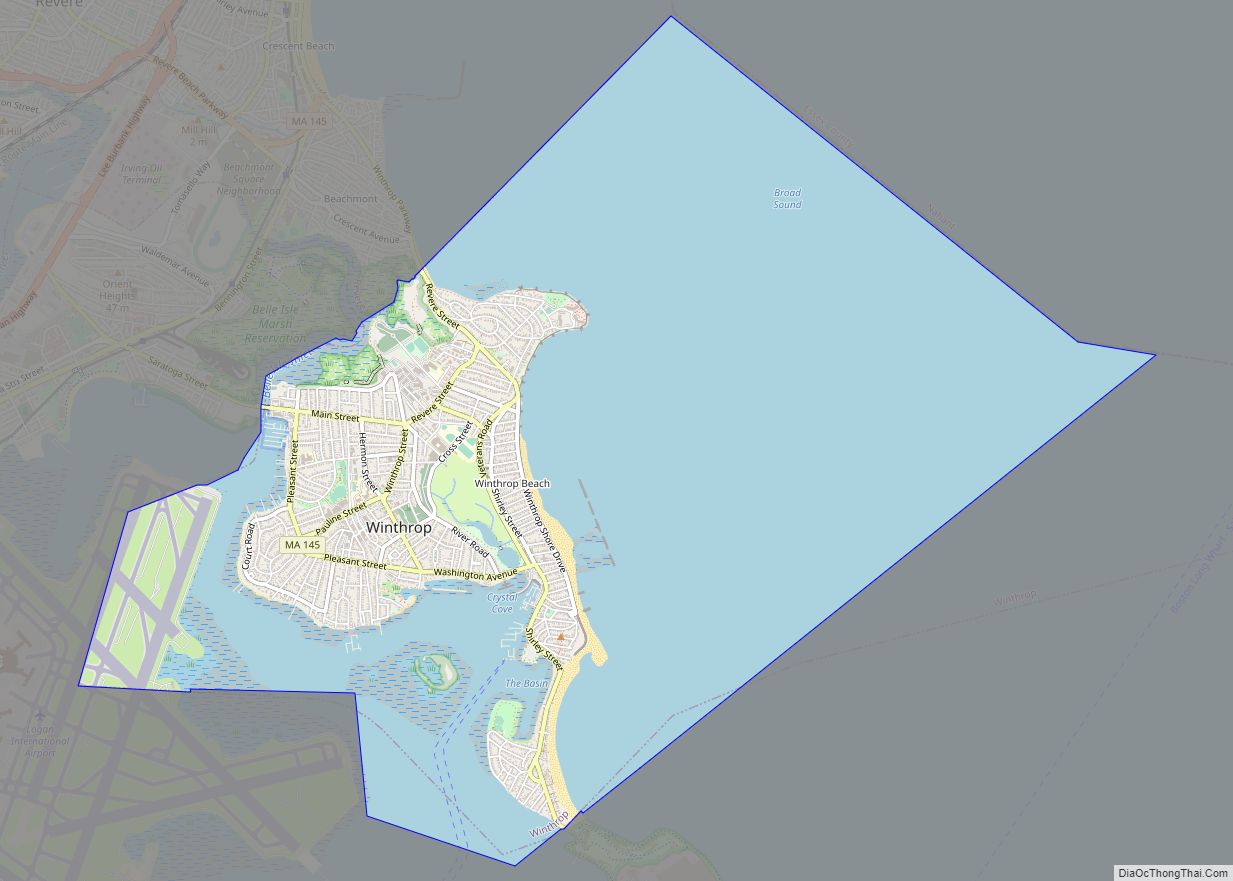Boston (US: /ˈbɔːstən/), officially the City of Boston, is the capital and largest city of the Commonwealth of Massachusetts and the cultural and financial center of the New England region of the Northeastern United States. The city boundaries encompass an area of about 48.4 sq mi (125 km) and a population of 675,647 as of 2020. The city is the economic and cultural anchor of a substantially larger metropolitan area known as Greater Boston, a metropolitan statistical area (MSA) home to 4,941,632 million people as of 2020, ranking as the tenth-largest MSA in the country. A broader combined statistical area (CSA), generally corresponding to the commuting area and including Worcester, Massachusetts and Providence, Rhode Island, is home to approximately 8.2 million people, making it the sixth most populous in the United States.
Boston is one of the oldest municipalities in America, founded on the Shawmut Peninsula in 1630 by Puritan settlers from the English town of the same name. It was the scene of several key events of the American Revolution and the nation’s founding, such as the Boston Massacre, the Boston Tea Party, the Battle of Bunker Hill, and the siege of Boston. Upon American independence from Great Britain, the city continued to be an important port and manufacturing hub as well as a center for education and culture. The city has expanded beyond the original peninsula through land reclamation and municipal annexation. Its rich history attracts many tourists, with Faneuil Hall alone drawing more than 20 million visitors per year. Boston’s many firsts include the United States’ first public park (Boston Common, 1634), first public or state school (Boston Latin School, 1635) first subway system (Tremont Street subway, 1897), and first large public library (Boston Public Library, 1848).
Today, Boston is a center of scientific research; the area’s many colleges and universities, notably Harvard and MIT, make it a world leader in higher education, including law, medicine, engineering and business, and the city is considered to be a global pioneer in innovation and entrepreneurship, with nearly 5,000 startups. Boston’s economic base also includes finance, professional and business services, biotechnology, information technology, and government activities. Households in the city claim the highest average rate of philanthropy in the United States. Boston businesses and institutions rank among the top in the country for environmental sustainability and new investment.
| Name: | Boston city |
|---|---|
| LSAD Code: | 25 |
| LSAD Description: | city (suffix) |
| State: | Massachusetts |
| County: | Suffolk County |
| Elevation: | 46 ft (14 m) |
| Land Area: | 48.34 sq mi (125.20 km²) |
| Water Area: | 41.27 sq mi (106.90 km²) |
| Population Density: | 13,976.98/sq mi (5,396.51/km²) |
| FIPS code: | 2507000 |
| GNISfeature ID: | 617565 |
| Website: | Boston.gov |
If you’re looking for a map of Boston, Massachusetts, you’ve come to the right place. Our collection of maps includes major highways and roads, places to visit, landmarks, and an interactive map. Just download and print.
Boston is a city with a rich history. It was a major site of conflict during the American Revolution and is now best known for its baseball, marathon, the bar from Cheers (the Bull & Finch Pub), and more. From the renowned Harvard University to the historical churches and parks, this city has it all.
Our Boston map collection has all the information you need to explore this vibrant city without leaving your home. Download and print maps of major highways and roads, places to visit, landmarks, and an interactive map. Get exploring!
Online Interactive Map
Click on ![]() to view map in "full screen" mode.
to view map in "full screen" mode.
This Boston interactive map shows you everything in Boston. From the best places to eat and shop to the best things to do every day all year long, this map will help you find what you want quickly and easily. Explore the city of Boston in so many ways to find out what’s going on in Boston and the surrounding area.
Boston location map. Where is Boston city?
Boston Road Map
At times, it can be difficult to navigate the traffic and find your way around town. To help you on your next road trip, we put together this comprehensive road map of Boston. This handy tool can help you navigate around the city with major highways like I-90 and I-93, as well as US Highways 1, 1A, 2, 2A, 3, 3A, 9, 20, 28, 90, 99, 109, 203, William F Mcclellan Hwy, Parkways Jamaicaway and Veterans of Foreign Wars Parkway (VFW) Pky, and major roads including Adams St, Alford St, Arborway, Arlington St, Beacon St, Blue Hill Ave, Boylston St, Bridge, Broadway, Brookline Ave, Cambridge St, Carlton St, Causeway St, Centre St, Charles St, Charlestown Bridge, Chelsea St, Clarendon St, Columbus Ave, Commonwealth Ave, Dartmouth St, Dorchester Ave, Essex St, Fenway, Frontage Rd, Gallivan Blvd, Granite Ave, Harvard St, Huntington Ave, Leverett Cir, Lomasney Way, Longfellow Bridge, Martha Rd, Massachusetts Ave, Merrimac St, Morrissey Blvd, Morton St, Mountfort St, Nashua St, Park Dr, River Rd, Riverway St, Rutherford Ave, Saint James Ave, Seaver St, Soldiers Field Rd. Try this Massachusetts road map if you’re looking to get around outside of Boston.
Exploring Boston
Boston is the most populous city in Massachusetts, with over 675,000 people. It’s been a favorite among visitors for decades, and is now one of the most visited cities in the United States. Tourists come from around the world to experience the city’s many museums, monuments, and historic landmarks.
The city is served by Boston Logan International Airport (BOS), and includes a number of cities, towns, and Census-Designated Places (CDP). These include Boston, Braintree Town, Cambridge, Chelsea, Everett, Medford, Newton, Quincy, Revere, Somerville, Waltham, Watertown Town, Weymouth Town, and Winthrop Town. In addition, the surrounding area includes Arlington, Belmont, Brookline, Dedham, Hingham, Hull, Milton, Nahant, and Needham.
Explore the city’s many neighborhoods and find the must-see places. From the Freedom Trail to Fenway Park, there’s something for everyone in Boston.
10 things to do in Boston city
Boston is a great place to visit no matter what kind of traveler you are. From sports to history, there’s something for everyone in this city. Check out the Red Sox at Fenway Park, explore the Freedom Trail, or shop and dine at Faneuil Hall Marketplace. For a unique experience, visit the Paul Revere House, the Museum of Fine Arts, or the Boston Tea Party Ships & Museum. Finally, don’t forget to take in the views from the Skywalk Observatory.
Boston city Satellite Map
Geography
Boston has an area of 89.63 sq mi (232.1 km)—48.4 sq mi (125.4 km) (54%) of land and 41.2 sq mi (106.7 km) (46%) of water. The city’s official elevation, as measured at Logan International Airport, is 19 ft (5.8 m) above sea level. The highest point in Boston is Bellevue Hill at 330 ft (100 m) above sea level, and the lowest point is at sea level. Boston is situated on Boston Harbor, an arm of Massachusetts Bay, itself an arm of the Atlantic Ocean.
Boston is surrounded by the Greater Boston metropolitan region. It is bordered to the east by the town of Winthrop and the Boston Harbor Islands, to the northeast by the cities of Revere, Chelsea and Everett, to the north by the cities of Somerville and Cambridge, to the northwest by Watertown, to the west by the city of Newton and town of Brookline, to the southwest by the town of Dedham and small portions of Needham and Canton, and to the southeast by the town of Milton, and the city of Quincy. The Charles River separates Boston’s Allston-Brighton, Fenway-Kenmore and Back Bay neighborhoods from Watertown and the majority of Cambridge, and the mass of Boston from its own Charlestown neighborhood. The Neponset River forms the boundary between Boston’s southern neighborhoods and Quincy and Milton. The Mystic River separates Charlestown from Chelsea and Everett, and Chelsea Creek and Boston Harbor separate East Boston from Downtown, the North End, and the Seaport.
Neighborhoods
Boston is sometimes called a “city of neighborhoods” because of the profusion of diverse subsections; the city government’s Office of Neighborhood Services has officially designated 23 neighborhoods. More than two-thirds of inner Boston’s modern land area did not exist when the city was founded. Instead, it was created via the gradual filling in of the surrounding tidal areas over the centuries, with earth from leveling or lowering Boston’s three original hills (the “Trimountain”, after which Tremont Street is named) and with gravel brought by train from Needham to fill the Back Bay.
Downtown and its immediate surroundings consist largely of low-rise masonry buildings (often Federal style and Greek Revival) interspersed with modern highrises, in the Financial District, Government Center, and South Boston. Back Bay includes many prominent landmarks, such as the Boston Public Library, Christian Science Center, Copley Square, Newbury Street, and New England’s two tallest buildings: the John Hancock Tower and the Prudential Center. Near the John Hancock Tower is the old John Hancock Building with its prominent illuminated beacon, the color of which forecasts the weather. Smaller commercial areas are interspersed among areas of single-family homes and wooden/brick multi-family row houses. The South End Historic District is the largest surviving contiguous Victorian-era neighborhood in the US. The geography of downtown and South Boston was particularly affected by the Central Artery/Tunnel Project (known unofficially as the “Big Dig”) which removed the elevated Central Artery and incorporated new green spaces and open areas.
Climate
Under the Köppen climate classification, depending on the isotherm used, Boston has either a humid subtropical climate (Köppen Cfa) under the −3 °C (26.6 °F) isotherm or a humid continental climate under the 0 °C isotherm (Köppen Dfa). The city is best described as being in a transitional zone between the two climates. Summers are typically warm and humid, while winters are cold and stormy, with occasional periods of heavy snow. Spring and fall are usually cool to mild, with varying conditions dependent on wind direction and jet stream positioning. Prevailing wind patterns that blow offshore minimize the influence of the Atlantic Ocean. However, in winter areas near the immediate coast will often see more rain than snow as warm air is drawn off the Atlantic at times. The city lies at the transition between USDA plant hardiness zones 6b (most of the city) and 7a (Downtown, South Boston, and East Boston neighborhoods).
The hottest month is July, with a mean temperature of 74.1 °F (23.4 °C). The coldest month is January, with a mean temperature of 29.9 °F (−1.2 °C). Periods exceeding 90 °F (32 °C) in summer and below freezing in winter are not uncommon but rarely extended, with about 13 and 25 days per year seeing each, respectively. Sub- 0 °F (−18 °C) readings usually occur every 3 to 5 years. The most recent sub- 0 °F (−18 °C) reading occurred on February 4, 2023, when the temperature dipped down to −10 °F (−23 °C); the lowest temperature reading in the city since 1957. In addition, several decades may pass between 100 °F (38 °C) readings, with the most recent such occurrence on July 24, 2022, when the temperature reached 100 °F (38 °C). The city’s average window for freezing temperatures is November 9 through April 5. Official temperature records have ranged from −18 °F (−28 °C) on February 9, 1934, up to 104 °F (40 °C) on July 4, 1911. The record cold daily maximum is 2 °F (−17 °C) on December 30, 1917, while, conversely, the record warm daily minimum is 83 °F (28 °C) on August 2, 1975, and July 21, 2019.
Boston’s coastal location on the North Atlantic moderates its temperature but makes the city very prone to nor’easter weather systems that can produce much snow and rain. The city averages 43.6 in (1,110 mm) of precipitation a year, with 49.2 in (125 cm) of snowfall per season. Most snowfall occurs from mid-November through early April, and snow is rare in May and October. There is also high year-to-year variability in snowfall; for instance, the winter of 2011–12 saw only 9.3 in (23.6 cm) of accumulating snow, but the previous winter, the corresponding figure was 81.0 in (2.06 m).
Fog is fairly common, particularly in spring and early summer. Due to its location along the North Atlantic, the city often receives sea breezes, especially in the late spring, when water temperatures are still quite cold and temperatures at the coast can be more than 20 °F (11 °C) colder than a few miles inland, sometimes dropping by that amount near midday. Thunderstorms occur from May to September, which are occasionally severe with large hail, damaging winds, and heavy downpours. Although downtown Boston has never been struck by a violent tornado, the city itself has experienced many tornado warnings. Damaging storms are more common to areas north, west, and northwest of the city. Boston has a relatively sunny climate for a coastal city at its latitude, averaging over 2,600 hours of sunshine per annum.
See or edit raw graph data.
Cityscapes
See also
Map of Massachusetts State and its subdivision: Map of other states:- Alabama
- Alaska
- Arizona
- Arkansas
- California
- Colorado
- Connecticut
- Delaware
- District of Columbia
- Florida
- Georgia
- Hawaii
- Idaho
- Illinois
- Indiana
- Iowa
- Kansas
- Kentucky
- Louisiana
- Maine
- Maryland
- Massachusetts
- Michigan
- Minnesota
- Mississippi
- Missouri
- Montana
- Nebraska
- Nevada
- New Hampshire
- New Jersey
- New Mexico
- New York
- North Carolina
- North Dakota
- Ohio
- Oklahoma
- Oregon
- Pennsylvania
- Rhode Island
- South Carolina
- South Dakota
- Tennessee
- Texas
- Utah
- Vermont
- Virginia
- Washington
- West Virginia
- Wisconsin
- Wyoming
